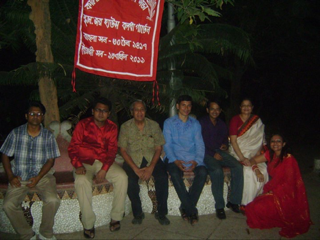Under the cloak of a pandemic and the convulsions of anti-racist protests, the Trump administration continues to advance its policies to restrict legal immigration, halting the flow of foreign workers and raising the bar for asylum-seekers hoping for sanctuary.
This week, administration officials proposed a fallback for when they need to lift “emergency” border closure rules for the coronavirus, proposing regulations that would raise the standard of proof for migrants hoping to obtain asylum and allow immigration judges to deny applications for protection without giving migrants an opportunity to testify in court.
If adopted, the rules would lay a framework of restrictionist immigration policies that can be enforced after rules rooted in the pandemic are lifted. The administration last month extended a coronavirus border rule that effectively blocked tens of thousands of migrants from seeking asylum at the southwestern border In April, President Donald Trump issued an executive order temporarily suspending the issuance of green cards to many outside the United States and is expected to limit certain visas issued to immigrants seeking temporary work in the country.
Education Secretary Betsy DeVos issued an emergency rule Thursday night barring colleges from granting virus relief funds to foreign and undocumented students, including tens of thousands protected under the Deferred Action for Childhood Arrival program, or DACA.
And the administration is examining restrictions on new skilled-worker H-1B visas in the coming weeks.
“You’re going to see some more news on that probably sometime soon,” Kenneth Cuccinelli, the acting deputy secretary of the Department of Homeland Security, said Wednesday at an event organised by the Heritage Foundation when asked about nonimmigrant visas.
In the past month, top administration officials, including Stephen Miller, a senior White House adviser and an architect of Trump’s hard-line immigration agenda, have discussed ways to follow up on the executive order in April. That order, which was riddled with exemptions, was immediately criticised by conservative groups that had hoped the administration would restrict nonimmigrant visa programs that are used to bring thousands of workers to the United States.
Top administration officials have continued to debate whether a new executive order should encompass a host of worker visas, including H-1B visas for skilled workers, according to two government officials. In a meeting held in recent weeks, Miller has pressed Trump and the labor secretary, Eugene Scalia, to significantly reduce the number of foreign workers entering the country. But officials emphasised that the order, which is expected to be released in the coming week, is not finished. Visa holders in the United States are not likely to be affected.
“Whether it’s restrictions to legal immigration or further gutting the asylum system, the goal to reduce immigration to its lowest level possible continues to be at the forefront of this administration’s decision-making,” said Aaron Reichlin-Melnick, the policy counsel at the American Immigration Council.
In defending the initial executive order and border restrictions, White House officials said those moves were needed to conserve US jobs and prevent potential outbreaks during a pandemic that has left tens of millions out of work and ravaged the economy, despite multiple studies that show immigrants bolster the economy. And long before the coronavirus, Miller sought to use health authorities to turn away migrants at the border.
The Department of Homeland Security has pointed to the pandemic in “expelling” more than 20,000 migrants to Mexico and their home countries without providing due process. In the coming days, Customs and Border Protection is expected to announce an increase in the number of migrants turned away under that policy, which is intended to last for the duration of the pandemic.
Other programs that have largely halted asylum at the border partly rely on the cooperation of foreign governments, including a bilateral deal that deports asylum-seekers to Guatemala to seek protections and an agreement that forces migrants to wait in Mexico for the duration of their asylum case in the United States.
The proposal pushed forward by the Justice Department and the Department of Homeland Security on Wednesday night came one day after the first legal challenge was filed to the administration’s coronavirus-related border restrictions. The regulation would allow the administration to unilaterally seal off asylum-seekers, even while Trump’s physical barrier is far from complete.
Theresa Cardinal Brown, the director of immigration and cross-border policy at the Bipartisan Policy Center, called the new proposal the culmination of “all the scattershot regulations” already in effect and “an insurance policy against countries saying: ‘Never mind. We’re not going to do your dirty work anymore.’”
The proposed regulation, which is open for a comment period for 30 days, would not entitle a migrant to a full court proceeding to hear their claims.
It would also give officers broad authority to declare asylum applications “frivolous,” barring migrants from seeking other forms of immigration relief in the United States.
The rule would also raise the bar that migrants must meet to be considered persecuted in their home countries. Those claiming to be targeted by gangs or “rogue” government officials are likely to be turned away, and those seeking protection on the basis of their gender would have limited ability to seek asylum.
“Persecution is an extreme concept involving a severe level of harm that includes actions so severe that they constitute an exigent threat,” Chad R. Mizelle, the acting general counsel of the Department of Homeland Security, wrote in issuing the rule.
Mizelle said it would not encompass harm from criminal or military strife, intermittent harassment or detentions or foreign governments failing to enforce laws.
Under the proposed policy, the Trump administration would be able to deny migrants asylum if they spent 14 days in another country and did not apply for protections there on their way to the United States, building off a similar measure announced in July. It remains unclear to what extent the rule would be applied to pending applications.
The administration has repeatedly said the asylum system should be streamlined given a backlog of more than 1 million cases.
As the White House has increased the barriers to seeking sanctuary in the country, thousands of migrants have been left to wait in squalid tent camps.
“Here we are fleeing from political violence from a place where they’ve threatened us, and we have to end up in a place like this,” said Perla Vargas, 45, who has spent 10 months in a camp in Matamoros, Mexico, with her 27-year-old daughter and two grandchildren. “It’s difficult to seek refuge with conditions like this.”
Vargas has tried to keep busy after fleeing Nicaragua, where armed civilian groups began following her after she participated in an anti-government demonstration.
Before the pandemic, Vargas, a former health care worker, tried to help form a makeshift school for the many migrant children in the camp. But in recent days, she has sought to encourage other migrants to protect themselves from the coronavirus.
Vargas has also tried to distract her grandchildren from their current situation. The family was robbed twice on their way to the border, and their remaining belongings were drenched after recent downpours broke through their tent.
“The kids say all the time, ‘We want to leave already.’ It’s frustrating to hear them say it. This has become harder and harder,” Vargas said. “I’m not sure I can keep living in this painful situation.”






















